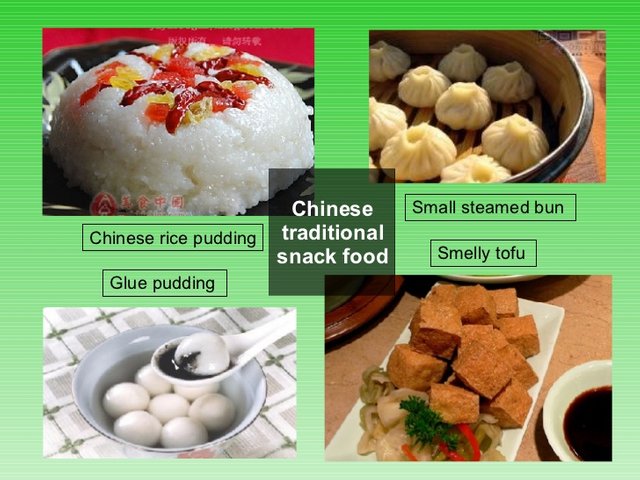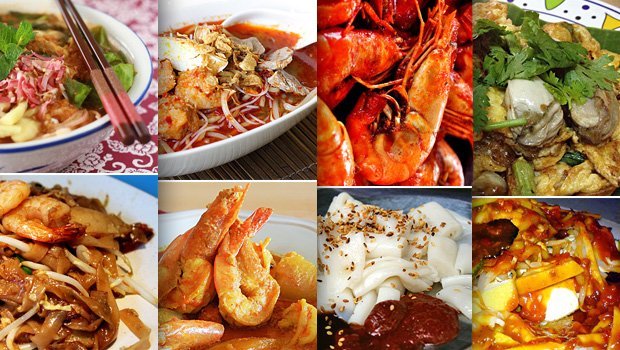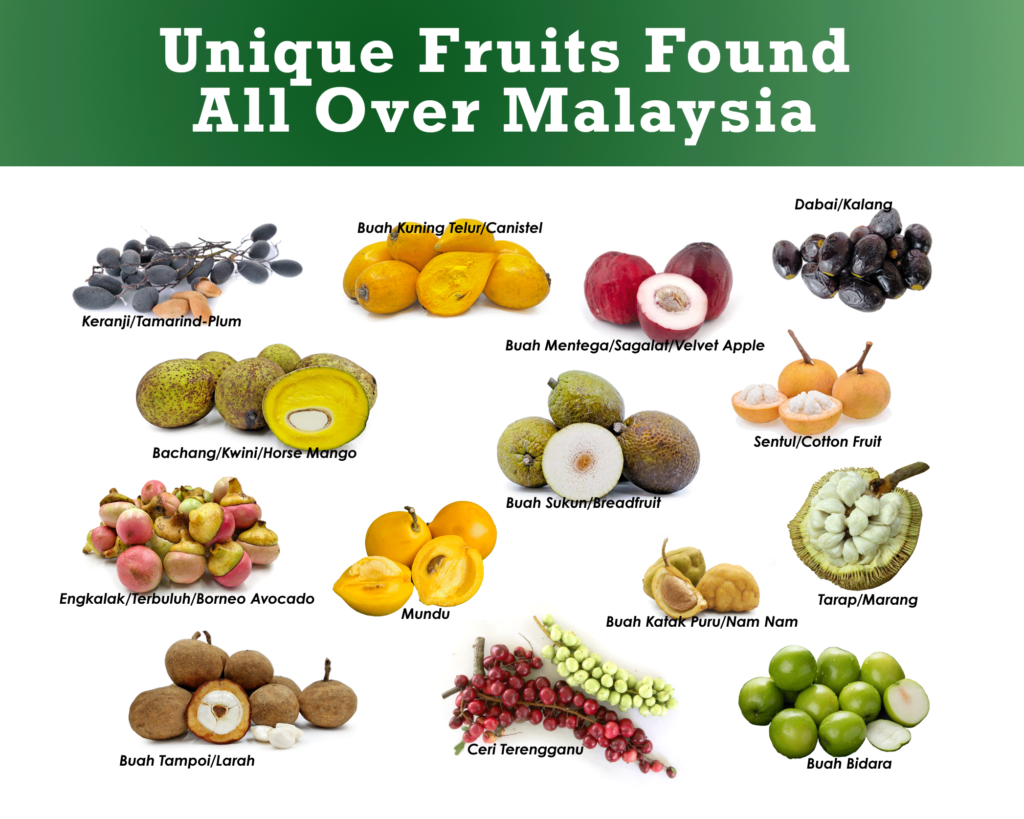Chinese food focuses on diverse regional flavors and techniques. Malaysian food blends Malay, Chinese, and Indian influences.
Chinese cuisine offers a rich variety of dishes, each reflecting the unique traditions of its regions. From Sichuan’s spicy flavors to Cantonese dim sum, the diversity is vast. Malaysian food, on the other hand, is a melting pot of cultures.
It combines the spicy richness of Malay dishes, the savory elements of Chinese cuisine, and the aromatic spices of Indian food. This fusion results in vibrant, flavorful meals. Both cuisines celebrate their heritage, but Malaysian food stands out due to its multicultural roots. Understanding these distinctions helps in appreciating the unique culinary experiences they offer.
Cultural Roots Of Cuisine
The cultural roots of a cuisine shape its flavors and ingredients. Chinese and Malaysian foods are no different. Each has unique traditions, ingredients, and cooking methods. Let’s explore these culinary landscapes.
Historical Influences On Chinese Food
Chinese food has a rich history. Ancient dynasties influenced its flavors. Spices, herbs, and techniques evolved over centuries. Confucianism and Taoism shaped eating habits and cooking styles.
Here’s a table showcasing key historical influences:
| Dynasty | Influence on Cuisine |
|---|---|
| Han | Introduction of meat and dairy |
| Tang | Use of exotic spices |
| Song | Refinement of tea culture |
| Ming | Expansion of regional dishes |
Ethnic Diversity Shaping Malaysian Gastronomy
Malaysian food is a melting pot. It reflects the country’s ethnic diversity. Malay, Chinese, Indian, and indigenous groups all contribute. Each ethnic group brings its flavors and techniques.
Key influences include:
- Malay – Use of coconut milk and turmeric
- Chinese – Stir-frying and soy sauce
- Indian – Spices like cumin and coriander
- Indigenous – Unique herbs and jungle produce
Malaysian cuisine reflects a tapestry of cultural influences. This diversity makes it rich and vibrant.
Credit: www.quora.com
Staple Ingredients
Chinese and Malaysian cuisines are rich and diverse. Each has its unique staple ingredients. Understanding these ingredients helps appreciate their distinct flavors.
Common Base In Chinese Dishes
Chinese cuisine often uses rice, noodles, and tofu as base ingredients. These staples provide a foundation for many dishes.
- Rice: Found in fried rice, congee, and sushi.
- Noodles: Used in lo mein, chow mein, and ramen.
- Tofu: Essential for vegetarian dishes and soups.
Chinese cooking also relies on soy sauce, ginger, and garlic. These add depth and flavor to various meals.
- Soy Sauce: Common in stir-fries and marinades.
- Ginger: Adds spice and warmth to dishes.
- Garlic: Used in almost every savory recipe.
Malaysian Pantry Essentials
Malaysian cuisine blends Malay, Chinese, and Indian influences. This mix creates unique staple ingredients.
- Coconut Milk: Adds creaminess to curries and desserts.
- Belacan: Fermented shrimp paste for rich, umami flavor.
- Chili Paste: Essential for spicy sambal and sauces.
Other important ingredients are lemongrass, turmeric, and pandan leaves. These provide distinct tastes and aromas.
- Lemongrass: Used in soups and marinades.
- Turmeric: Adds color and earthiness to dishes.
- Pandan Leaves: Gives a unique fragrance to rice and desserts.
Flavor Profiles
Chinese and Malaysian foods offer unique flavor experiences. Both cuisines have rich traditions and distinctive tastes. Understanding their flavor profiles helps in appreciating their culinary art.
The Five Tastes In Chinese Cooking
Chinese food emphasizes a balance of the five tastes: sweet, sour, salty, bitter, and umami. Each taste plays a crucial role in creating a harmonious dish.
- Sweet: Often derived from sugar, honey, or fruits. It balances spicy or salty flavors.
- Sour: Vinegar or citrus adds a sharp, tangy taste. It refreshes the palate.
- Salty: Soy sauce or salt enhances other flavors. It is essential in many dishes.
- Bitter: Bitterness comes from bitter melon or certain leafy greens. It adds depth to the taste.
- Umami: Fermented products like soy sauce and mushrooms provide a savory taste.
The Fusion Of Flavors In Malaysian Dishes
Malaysian cuisine is a blend of Malay, Chinese, Indian, and indigenous traditions. This fusion results in rich and complex flavors.
Malaysian dishes often combine:
- Spicy: Chili peppers and sambal paste add heat.
- Sour: Tamarind and lime juice give a tangy flavor.
- Sweet: Coconut milk and palm sugar add sweetness.
- Salty: Salted fish and soy sauce enhance flavors.
- Umami: Shrimp paste and fermented beans provide depth.
This fusion creates a unique taste that is both bold and balanced.
Cooking Techniques
Cooking techniques define the soul of any cuisine. Both Chinese and Malaysian foods have unique methods. These methods create distinct flavors and textures. Let’s explore these traditional approaches.
Traditional Chinese Methods
Chinese cooking relies heavily on stir-frying. This method involves cooking food quickly over high heat. Ingredients are often cut into small pieces. This helps them cook evenly.
Another key technique is steaming. Many dishes, especially dim sum, use this method. Steaming preserves the natural flavors and nutrients.
Roasting is also common in Chinese cuisine. Think of Peking duck. The meat is roasted to achieve crispy skin.
Chinese chefs also use braising. This method involves slow-cooking meat in a flavored liquid. The result is tender, flavorful dishes.
| Technique | Description |
|---|---|
| Stir-frying | Quick cooking over high heat with small pieces. |
| Steaming | Cooking with steam to preserve flavors and nutrients. |
| Roasting | Slow-cooking meat to achieve crispy skin. |
| Braising | Slow-cooking in flavored liquid for tender meat. |
Malaysian Culinary Practices
Malaysian food features a lot of grilling. Satay is a popular example. Meat skewers are grilled over charcoal for a smoky flavor.
Stir-frying is also common in Malaysia. It’s used in many noodle and rice dishes. The technique is similar to Chinese stir-frying but with local spices.
Stewing is another key method. Curries often use this technique. Ingredients are simmered in a rich, spiced broth.
Deep-frying is widely used in Malaysian cuisine. Many snacks and appetizers are deep-fried for a crispy texture.
| Technique | Description |
|---|---|
| Grilling | Cooking meat over charcoal for a smoky flavor. |
| Stir-frying | Quick cooking with local spices. |
| Stewing | Simmering ingredients in a spiced broth. |
| Deep-frying | Cooking snacks for a crispy texture. |
Typical Meals
Chinese and Malaysian cuisines have rich histories and unique flavors. Each meal offers a glimpse into the culture and traditions of these regions. Let’s delve into the typical meals you might encounter in both Chinese and Malaysian dining.
Structure Of Chinese Dining
Chinese meals often consist of several dishes served at once. The main components include:
- Rice or noodles as a staple
- Vegetable dishes like stir-fried greens
- Protein dishes such as pork, chicken, or tofu
- Soup served at the beginning or end
Meals are usually served family-style, with dishes placed in the center of the table. Each person uses their own bowl and chopsticks to eat.
| Dish Type | Common Examples |
|---|---|
| Rice/Noodles | Fried Rice, Lo Mein |
| Vegetable Dishes | Stir-Fried Bok Choy, Eggplant with Garlic Sauce |
| Protein Dishes | Sweet and Sour Pork, Kung Pao Chicken |
| Soup | Hot and Sour Soup, Wonton Soup |
Layout Of A Malaysian Feast
Malaysian meals are vibrant and diverse, reflecting the country’s multicultural heritage. A typical meal includes:
- Rice as a staple, often flavored with coconut milk
- Curry dishes featuring chicken, beef, or fish
- Vegetable dishes like spicy sambal stir-fries
- Side dishes such as satay or roti
Meals are laid out buffet-style, allowing diners to pick and choose. The variety of flavors and textures is a feast for the senses.
| Dish Type | Common Examples |
|---|---|
| Rice | Nasi Lemak, Nasi Goreng |
| Curry Dishes | Chicken Rendang, Fish Curry |
| Vegetable Dishes | Kangkung Belacan, Acar |
| Side Dishes | Satay, Roti Canai |
Street Food Scene
The street food scene is vibrant in both China and Malaysia. Each country offers unique flavors and experiences. Dive into the bustling markets and savor the delicious bites.
Snacking On Chinese Streets
Chinese street food is a feast for the senses. Vendors line the streets with sizzling woks and steaming pots. Popular snacks include baozi (steamed buns) and jianbing (savory crepes). These snacks are not just food; they are a cultural experience.
- Baozi: Soft steamed buns filled with meat or vegetables.
- Jianbing: A crispy crepe with eggs, scallions, and sauces.
- Chuanr: Skewered and grilled meats, often spicy.
Street food markets, like Beijing’s Wangfujing, are famous. They offer a variety of snacks from different regions. Each vendor specializes in unique flavors and techniques.
Malaysian Street Food Adventures
Malaysian street food is a melting pot of cultures. Vendors offer dishes influenced by Malay, Chinese, and Indian cuisines. Popular street foods include satay and laksa. These dishes are aromatic and rich in flavor.
- Satay: Skewered and grilled meats served with peanut sauce.
- Laksa: Spicy noodle soup with coconut milk and seafood.
- Roti Canai: Flaky flatbread served with curry.
Night markets, like Kuala Lumpur’s Jalan Alor, are vibrant and lively. They offer a wide range of dishes and snacks. The atmosphere is electric with vendors and hungry foodies.
Regional Variations
Regional variations are significant in both Chinese and Malaysian food. Each region offers unique flavors and ingredients. Understanding these differences helps appreciate the rich culinary diversity. Let’s delve into the specifics of each region.
Diversity Within Chinese Regions
China’s vast geography leads to diverse culinary practices. Chinese cuisine is generally categorized into eight major regions:
- Cantonese: Known for its mild flavors and fresh ingredients.
- Sichuan: Famous for spicy and bold flavors.
- Shandong: Features seafood and hearty dishes.
- Jiangsu: Focuses on sweet and savory balance.
- Zhejiang: Emphasizes fresh and light dishes.
- Fujian: Known for its soups and stews.
- Hunan: Similar to Sichuan but with more oil and vinegar.
- Anhui: Utilizes wild herbs and local vegetables.
Each region adds its own twist to common ingredients. For instance, rice is a staple in southern China, while wheat dominates the north. The use of spices also varies greatly, with Sichuan and Hunan being the spiciest.
Local Differences In Malaysia
Malaysian cuisine showcases a blend of various cultural influences. Key regional variations include:
- Penang: Known for street food and hawker stalls.
- Kuala Lumpur: Offers a mix of Malay, Chinese, and Indian dishes.
- Sabah and Sarawak: Features indigenous ingredients and cooking methods.
Penang is famous for dishes like Char Kway Teow and Assam Laksa. Kuala Lumpur offers diverse options like Nasi Lemak and Roti Canai. Sabah and Sarawak incorporate unique ingredients like wild ferns and bamboo shoots.
Both Chinese and Malaysian cuisines are rich in regional diversity. This makes them fascinating and unique. Exploring these variations enriches your culinary experience.

Credit: www.pinterest.com
Modern Fusion And Trends
The culinary world is always evolving, and both Chinese and Malaysian cuisines are no exception. Modern fusion and trends have brought exciting changes to traditional dishes. Chefs experiment with flavors and techniques, creating unique culinary experiences.
Innovations In Chinese Cuisine
Chinese cuisine is rich in history but open to innovation. Modern chefs blend traditional recipes with contemporary ingredients. This fusion creates dishes that surprise and delight.
- Dim Sum with a Twist: Classic dim sum items now have exotic fillings.
- Fusion Dumplings: Dumplings are filled with non-traditional ingredients like cheese.
- Tea-Infused Dishes: Green tea is used in savory recipes.
Restaurants also experiment with presentation. Dishes are more visually appealing, enhancing the dining experience.
| Traditional Chinese Dish | Modern Fusion Variant |
|---|---|
| Peking Duck | Peking Duck Tacos |
| Sweet and Sour Pork | Sweet and Sour Pork with Pineapple Salsa |
| Hot Pot | Hot Pot with International Broths |
Contemporary Malaysian Food Movements
Malaysian cuisine is a melting pot of cultures. Modern chefs blend Malay, Chinese, and Indian influences in new ways. This results in dishes that are both familiar and innovative.
- Nasi Lemak Sushi: Combining traditional nasi lemak with sushi techniques.
- Modern Satay: Using different meats and marinades for satay skewers.
- Fusion Laksa: Mixing laksa with international ingredients like seafood.
Street food also gets a modern twist. Vendors use novel ingredients and techniques to attract foodies.
| Traditional Malaysian Dish | Modern Fusion Variant |
|---|---|
| Rendang | Rendang Tacos |
| Char Kway Teow | Char Kway Teow with Truffle Oil |
| Satay | Satay Burgers |
These innovations keep the culinary scene vibrant. They attract both locals and tourists eager to try something new.
Dining Etiquette
Dining etiquette is a significant part of food culture. It shows respect and understanding. Chinese and Malaysian dining customs have unique practices. Knowing them enhances your dining experience.
Table Manners In China
Chinese table manners are rich in tradition. Here are some key points:
- Chopsticks: Use them properly. Never stick them upright in rice.
- Seating: Wait for the host to seat you. The guest of honor sits first.
- Sharing: Dishes are shared. Use serving spoons for communal dishes.
- Respect: Elders are served first. Show respect by waiting for them.
- Toasting: Toasting is a common practice. It shows camaraderie and respect.
Eating Customs In Malaysia
Malaysian dining customs blend various cultures. Here’s what to know:
- Hands: Eating with hands is common. Use your right hand for eating.
- Offering: Always offer food to others before taking your portion.
- Seating: Wait for the host to invite you to sit. Elders sit first.
- Respect: Show respect to elders. Serve them first and wait for them to start.
- Thanking: Thank the host after the meal. It shows appreciation.
| Aspect | China | Malaysia |
|---|---|---|
| Eating Utensils | Chopsticks | Hands |
| Seating | Host seats guests | Host invites guests |
| Serving | Elders served first | Elders served first |
| Toasting | Common practice | Not common |

Credit: steemit.com
Impact Of Globalization
Globalization has transformed how we experience and enjoy food. It has led to the spread of various cuisines across the globe. Chinese and Malaysian foods have undergone significant changes due to globalization. Each cuisine has its unique journey and influence.
Chinese Food On The World Stage
Chinese food has a significant global presence. It is popular in many countries. Chinese restaurants can be found almost everywhere. Dishes like Kung Pao Chicken and Sweet and Sour Pork are well-known globally.
Chinese food adapts to local tastes. For example, American-Chinese food is different from traditional Chinese cuisine. It uses more sugar and less spice. This adaptation makes it more appealing to local palates.
Chinese cooking techniques such as stir-frying and steaming are also popular worldwide. Many people use woks and bamboo steamers in their kitchens. This shows the deep impact of Chinese culinary practices.
The International Reach Of Malaysian Cuisine
Malaysian cuisine is also gaining global attention. It is known for its diverse flavors. Malaysian food blends Malay, Chinese, and Indian influences.
Dishes like Nasi Lemak and Laksa are becoming popular. These dishes offer a unique taste experience. They combine spicy, sweet, and savory flavors.
Malaysian street food is also gaining popularity. Foods like Satay and Roti Canai are easy to find in many cities. This type of food is affordable and flavorful.
Malaysian cuisine is also promoted through food festivals. These events introduce people to new tastes and cooking methods. They help spread the love for Malaysian food.
Frequently Asked Questions
Is Malaysian Food Similar To Chinese?
Malaysian food shares some similarities with Chinese cuisine. Both feature rice and noodles, but Malaysian food has diverse influences, including Malay, Indian, and Thai flavors.
What Is Malaysian Style Chinese Food?
Malaysian style Chinese food blends Chinese recipes with local Malaysian spices and ingredients. Popular dishes include Hainanese chicken rice, char kway teow, and laksa. This cuisine often features bold flavors and diverse textures.
How Is Malaysian Chinese Different?
Malaysian Chinese blend Chinese heritage with Malaysian culture. They speak Mandarin, Cantonese, Hokkien, and Malay. They celebrate Chinese and Malaysian festivals. Their cuisine combines Chinese and local flavors.
What Is Unique About Malaysian Food?
Malaysian food stands out for its rich blend of Malay, Chinese, and Indian flavors. Spices like turmeric, cumin, and coriander dominate. Unique dishes include Nasi Lemak, Laksa, and Satay. Each meal offers a burst of diverse tastes and aromas, reflecting Malaysia’s multicultural heritage.
Conclusion
Exploring Chinese and Malaysian food reveals unique flavors and cultural influences. Each cuisine offers a distinctive culinary experience. From diverse ingredients to traditional techniques, both cuisines have rich histories. Savoring these dishes provides a delicious journey through Asia. Embrace the variety and enjoy the delicious differences between Chinese and Malaysian food.




Pingback: What is the Difference between Thai And Malaysian Cuisine – Malaysia for you